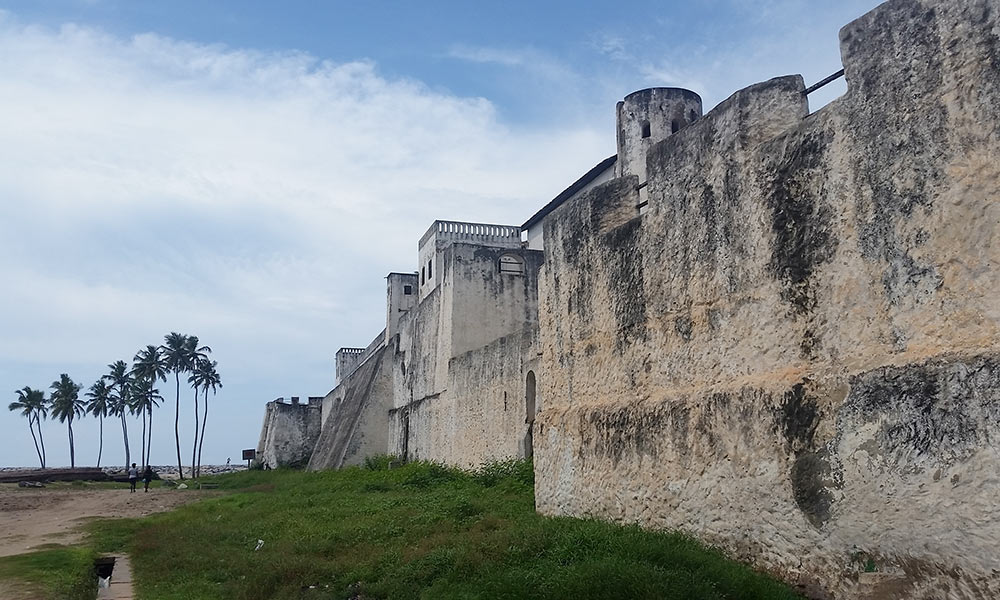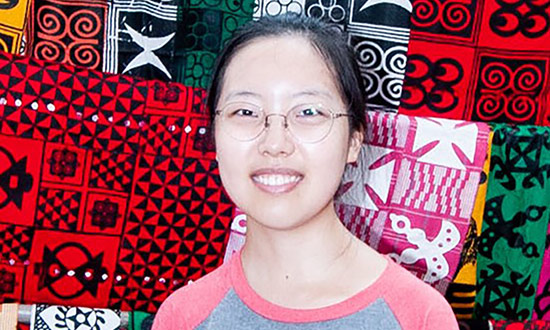This is the second summer that University students – led by professors Renato Perucchio, Michael Jarvis, and Chris Muir – are studying the engineering, historical, and cultural aspects of the coastal forts of Ghana. They will be sharing their experiences from the field here on this blog.
By Louisa Anderson ’20
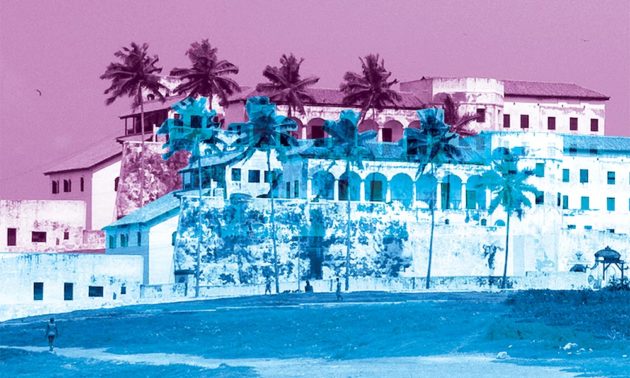
The first full day in Ghana was quite mellow. Some of the students and Professor Jarvis had arrived that morning so we wanted everyone to get settled in. First, we went to an eatery on the University of Ghana Campus called The Basement, which had a buffet style of lunch. Just like most of us on the trip, I had never had Ghanaian food before, so Saba – one of our teaching assistants from the University of Rochester – explained all of the options to us. I decided upon jollof rice, spicy tomato sauce, and fried plantains. All of the food was delicious, especially the jollof rice, which is cooked in spiced tomato sauce.
Of course as college students, getting SIM cards for our phone was a priority, so the second thing in Ghana was go to an MTN store (a multinational mobile telecommunications company).
After we loaded up on data, which was relatively cheap compared to US (about $20 for 6GB) we continued to explore the new Accra Mall. We treated ourselves to ice cream (more like bagged frozen yogurt) from Games, a large box store attached to the mall.
On our way back we stopped at a roadside coconut stand where a man with a machete hacked coconuts for us to drink. To be honest I was really worried he’d cut his hand off, but it looked like he was well practiced. Once we were done sipping the delicious nectar we handed back our shell to the man. He cut it perfectly so that we could eat the inner meat. It was delicious! Dinner was at a Turkish restaurant, which seemed to be a hit from last year. Jollof rice was available there too, so I happily ordered it again!
On Tuesday we went to the University of Ghana in the morning to walk around and visit the bookstore. We met Marley, a graduate student at the University of Ghana who will be working with us this month. With Marley as our guide, we drove around campus and to downtown Accra. While in the bus we passed the Accra market, the biggest marketplace in Accra where you could see a congregation of people carrying and selling goods. Our bus driver, Mr. Doh, said that it was impossible to pass through the entirety of the market in one day. I want to try!

We saw Jamestown lighthouse but unfortunately couldn’t climb it. The highlight of the afternoon was visiting the mausoleum of Kwame Nkrumah, the first president of Ghana. The mausoleum was in the shape of a tree stump, signifying the roots Kwame Nkrumah placed in Ghana as well as how his life was cut short. We were lucky to have a guide show us around the property and explain the recent history. There was a museum that housed a bunch of his belongings as well as peacocks roaming around the fields.
After, we had a delicious buffet lunch in the inner courtyard of the National Theatre, which had quite the impressive roof. We then returned to the University for lectures by Professor Perucchio and Professor Jarvis (both from the University of Rochester) and Professor Gavua (from University of Ghana). Professor Gavua reminded us to maximize our returns for this trip, and work to get the most out of our short time here! We had dinner at a Chinese restaurant, where the power briefly shut off, so we used our cell phones for mood lighting.
Wednesday was lecture day! We all headed to the archeology department at the University of Ghana caffeinated up because it would be a long day of sitting. Professor Perucchio lectured on the building material and structures we would see at Elmina Castle. Although I have taken many engineering classes, it was exciting to learn practical approaches to building and to learn about the materials the walls were built with. We had a quick lunch at the Basement again and of course I ordered jollof rice. Professor Gavua gave a lecture on the history and heritage of Ghana. It was very interesting to learn in depth about a country that I had only been in for a few days. I was so used to only learning about the country I call home. Then, Professor Gblerkpor gave a brief lecture about Ghana before 1482.
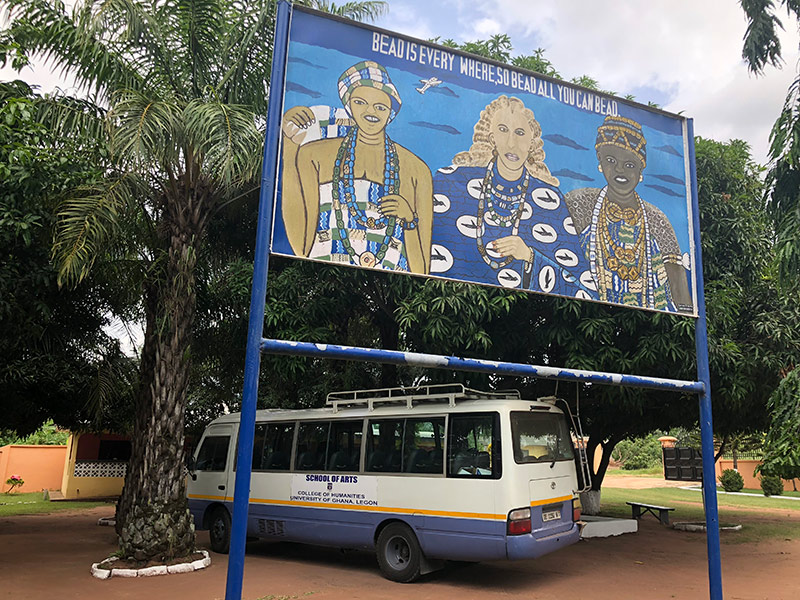
On Thursday we rose early to get a head start on the day. We drove for about two hours to the northeast towards Lake Volta. There we toured a bead factory that made handmade glass beads. The man who showed us around had traveled all over the world with his glass beading skills giving demonstrations and classes. It truly was an art to be seen. He showed us all the different beads he had made and the whole process that was followed. It was a beautiful setting with palm trees and grass and a clay kiln in the center that was in the process of firing beads. We then were guided to the shop in which there were tons of colorful and unique pieces of jewelry. Many of us bought gifts.
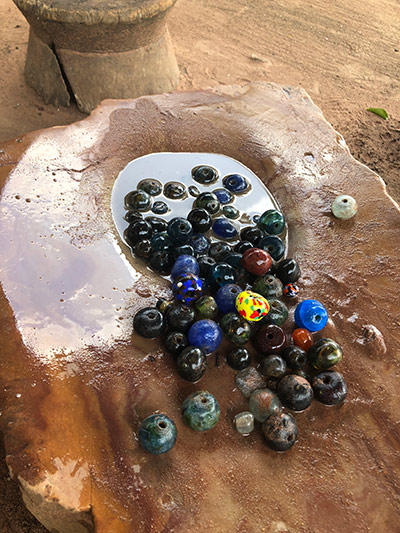
Our next stop on this road trip was the Akwamu Palace where a guide showed us many trophies and royal items that belonged to the community. We were careful and only touched them with our eyes. After some more activities it was lunchtime. We situated ourselves at a restaurant with a wonderful view of the Adomi Bridge along the river.
During lunch it started to downpour, but that was okay because it made the rest of the day quite cool. Our next stop was the main event of the day, the Akosombo Dam!
We were given special permission and a tour guide to show us the top of the dam. Professor Perucchio explained many of the structural components, while the tour guide gave us the history. The tour guide boasted that Lake Volta was the largest (in total area) man-made lake in the world. The dam was expansive and it was quite impressive (and nerve-wracking) to be able to walk on the top of it. As Professor Perucchio mentioned in his lecture the day before, the dam was in an A-shape form to effectively hold the force of the water. I was surprised to find out that the dam produced around 1020 MW of power each day. That meant that each of the six generator and turbine units produces about 170 MW! The dam operated on a supply and demand basis and only two of the turbine units were in use that day. There were many polished stones on the walkway that looked like beads, but maybe I only thought that because I had just visited a bead shop. It turned out to be a long day, and when we arrived back at the hotel everyone went right to bed.
Now off to new adventures!
Tag you’re it! @Kate
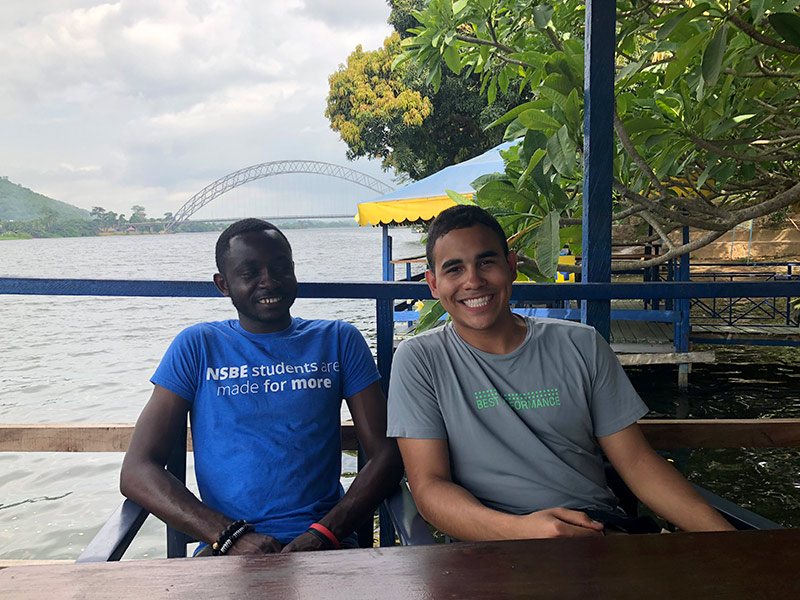
Louisa Anderson ’20 a mechanical engineering major from Berkeley, California. She is an active social chair for both Society of Women Engineers and American Society of Mechanical Engineers, where she plans and executes events. She has a strong interest in architecture, structural engineering, and travel which all added up to her participating in this field school. She loves dogs, juice, and mangoes.


